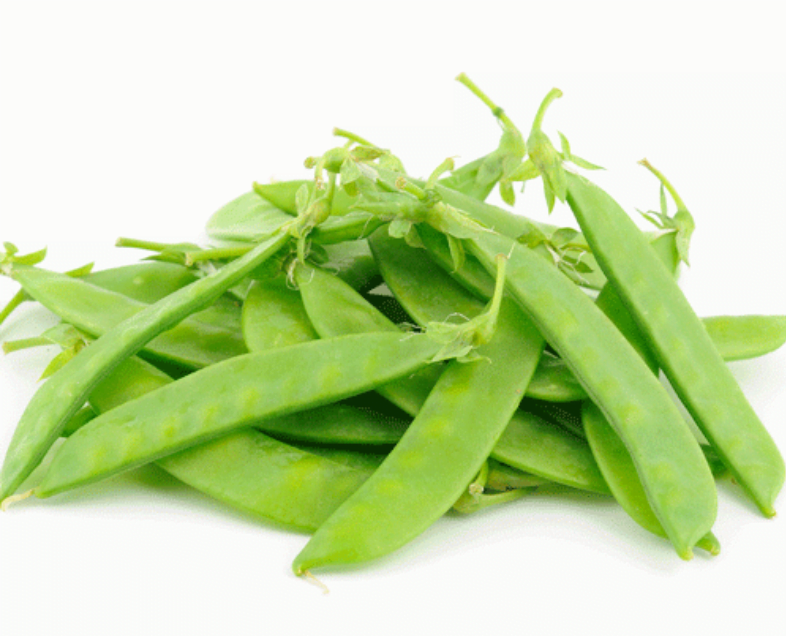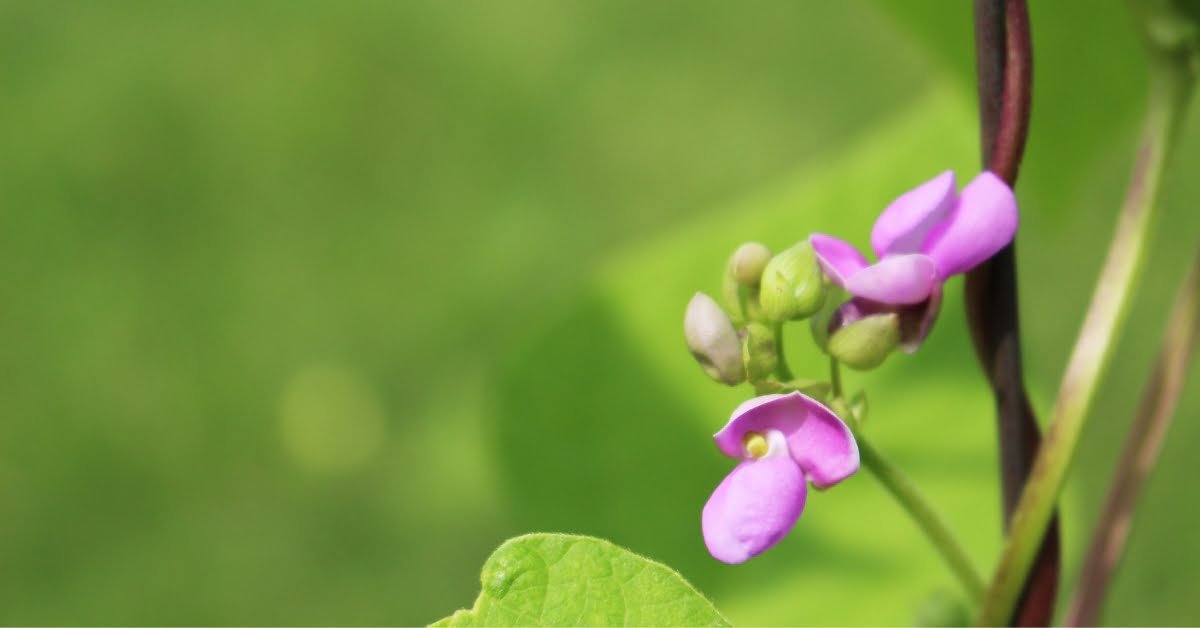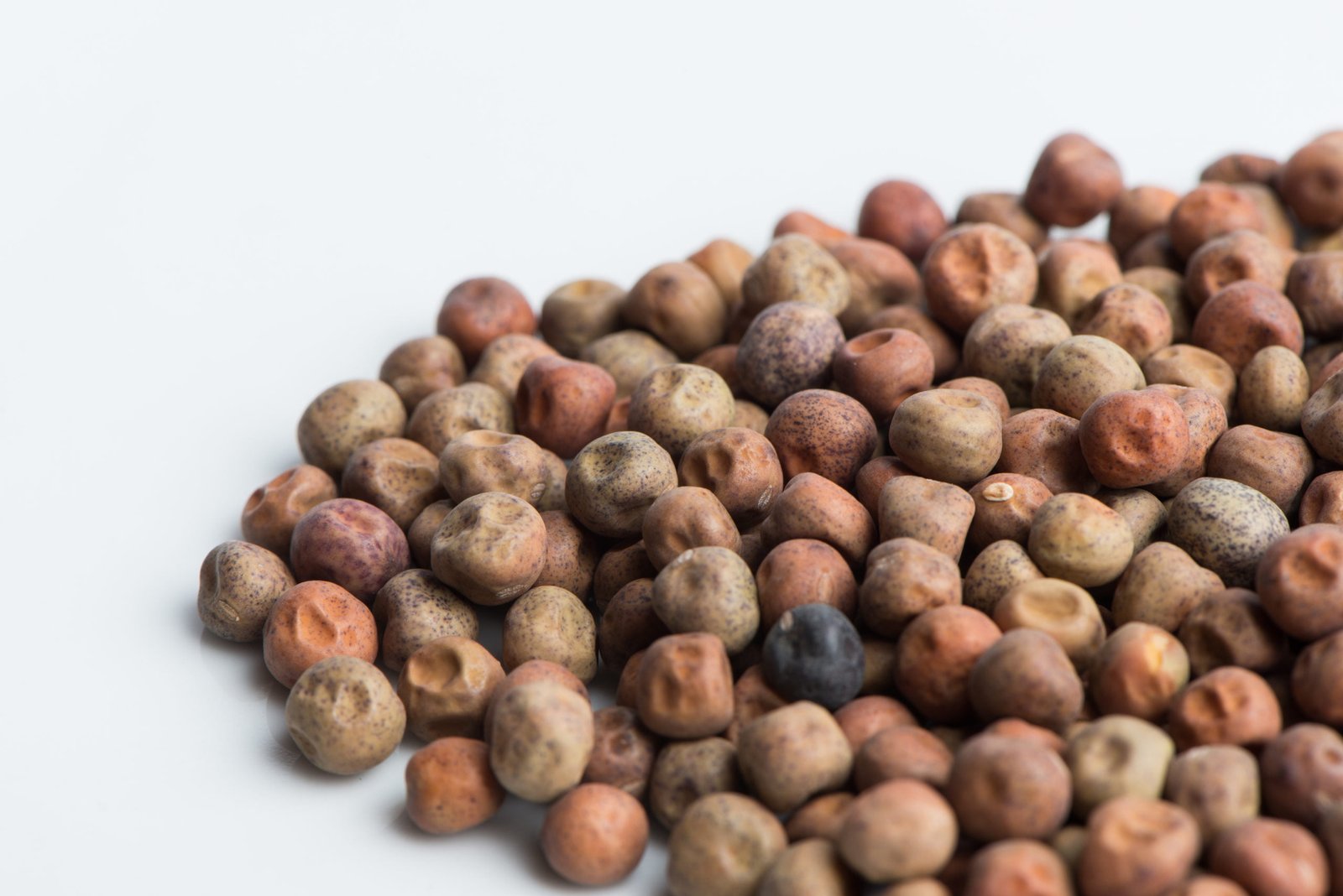Dwarf Gray Sugar snow peas are a delicious heirloom variety that produces plump and tender pods. These bushy and prolific plants reach heights of 24″ to 36″ inches at maturity, although they may grow even larger with proper care. Enjoy the sweet flavor of these peas in your favorite dishes!
Dwarf Grey Sugar Snow Pea
| Common Names or AKA Names: |
|
| Botanical Name: | Pisum sativum |
| Family: | Fabaceae |
| Plant Type (Zone 8b): | Annual |
| Hardiness Zones: | Zones 3 through 9 |
| Mature Size: | 24″ – 36″ inches tall |
| Native Area: | Eastern Europe and Western Asia |
| Bloom/Harvest Time: | 60 to 70 Days |
| Sun/Light Exposure: | 6 to 12 hours of Light. |
| Planting Depth: | 1″ inch deep. |
| Soil Preferences: | Well-Drained Loamy, Clay |
| Soil pH: | 6.0 – 7.0 |
| Aquaponically-Friendly: | YES | LEARN MORE |
| Hydroponically-Friendly: | YES | LEARN MORE |
DESCRIPTION:
This heirloom snow pea variety is well-loved for its edible pods and beautiful purple flowers. Dwarf Grey Sugar Peas grow up to 3′ feet tall and thrive in cool, wet climates. Perfect for garnishes or salad mixes, this variety is preferred both for taste and tenderness – with small snow pea pods averaging 2½ inches long. Vines reach 28″ inches long and can be grown with or without support; harvest early as a snow pea or later as a snap pea! Dwarf Gray were introduced into the USA before 1773.
USE:
Although often thought of as a sugar snap pea, ‘Dwarf Gray Sugar Pod’ is really a multipurpose pea variety. It can be harvested immature and used as snow peas, left to allow the peas to fill out and used as a snap pea, or even allowed to fully mature, dry on the plants, and harvested to be used as dry soup peas. At this later stage, they will develop strings which are easily removed through the old-time ritual of snapping or stringing. Makes a good addition salads and stir fries.
Culture & Cultivation:
Peas are a cold–hardy crop that thrive in cool growing seasons. For optimal growth, they require well–drained soils with a pH between 6.0–7.0 and should be inoculated with Rhizobium bacteria to stimulate nitrogen fixation for improved yields and soil fertility. Even short vines ‘bush‘ varieties benefit from trellising, which increases yield while making the peas easier to harvest.
If you want to learn more about cultivating this specific plant, you might want to check out our online courses where we have plant specific mini courses in addition to our standard fully packed courses and master gardening courses.
Planting & Care:
For optimal nitrogen fertility, inoculate your Dwarf Grey Sugar Pea seeds with Rhizobium bacteria prior to planting. Direct seed in spring 2–4 weeks before the last frost or 8–12 weeks before the first fall frost. Seeds will sprout quickly between temperatures of 60°F and 75°F when planted 1 inch deep, 1 seed every 1″ to 3″ inches apart with 24″–36″ inches between rows. To start indoors, use a sterile seed starting mix in 2″ – 4″ inch pots; plant 2 – 4 seeds per pot 1 inch deep and do not thin them out later on. Harden off the seedlings for 7 – 10 days prior to transplanting outside around 4″ – 6″ inches apart without disturbing their roots about 2 – 4 weeks before the last spring frost. Water your seedlings regularly to keep the soil moist but not soggy. Increase watering slightly once the peas begin to bloom.
Dwarf Gray Sugar pea plants don’t need much fertilizer, but you can apply a small amount of general-purpose fertilizer every 4-weeks. Remove weeds when they are small, as they will rob moisture and nutrients from the plants. Be careful not to disturb the roots.
Growing new plants can be difficult at times but not to worry Green Grass Grove Academy is here to help! We are excited to offer Online Courses on plant care and other Gardening and Homesteading Courses. Our goal is to provide you with the knowledge and skills necessary to become a successful gardener. Our Online Courses are designed to be self-paced and to be completed at your convenience. Courses contain invaluable information to help you become the ultimate Gardener! In addition, Our Courses have entertaining multimedia, quizzes, and a final exam to test your knowledge. Upon completion of each course, you are eligible to receive a certificate of completion. Some of our most popular courses include Aquaponics/Hydroponics, Plant Pathology, Seeds & Seedlings, Microgreens, Plant Mini-Courses, and Insect Pest & Nutrients Management.
So what are you waiting for? Come on over to Green Grass Grove Academy and let us help you become the ULTIMATE GROWER!
Watering:
Since peas are grown during cool weather irrigation is not usually necessary. However, if dry periods do occur, irrigate thoroughly early in the morning until the soil is moistened 8″ to 12″ inches deep.
Harvesting:
Harvest your Dwarf Grey sugar snow peas when the pods are plump and full for shell peas, thick and crispy with filled out peas inside for snap peas, or at a desirable size for snow peas. Frequently harvesting will encourage continued production of this delicious vegetable. Store in the refrigerator or freeze them for long–term storage!
Aphids | Cutworms | Seed Maggots | Pea Weevils | Slugs
Take Our Online Insect Pest Management Course to become an expert at dealing with these pests and others too!
Learn More About This Plant!
Peas are susceptible to various soil borne seed and seedling rots as well as foliar diseases such as Ascochyta Blight and Powdery Mildew. Choose mildew resistant varieties for fall sowings (see variety descriptions). Avoid overhead irrigation, trellis and increase plant spacing to maximize airflow, practice crop rotations, and compost crop debris to manage these and other diseases. Heavy thrips pressure may be controlled by use of row covers or OMRI-approved Spinosad sprays. See our merchandise section for related products.
- Okay for container gardening with climbing support!
- Superb companions for beans, carrots, celery, corn, cucumber, eggplant, parsley, peppers, potatoes, radish, spinach, strawberries, and turnips. Avoid planting peas near onions.
- Edible Flowers: The flowers, with their mild and pea-like flavor, are a popular choice for brightening up salad mix. They can also be used in micro mix salads, as a garnish for desserts, or for candying to place on cakes.
The information in this post is NOT medical/nutrition advice, as we are not doctors or nutritionists. This information is for informational/entertainment purposes only and is not a substitute for professional medical advice, nutrition advice, diagnosis or treatment. If you have any concerns or questions about your health or nutrition intake, you should always consult with a doctor or other licensed and qualified healthcare professional.
Green Grass Grove Plant Profiles
No posts found!






